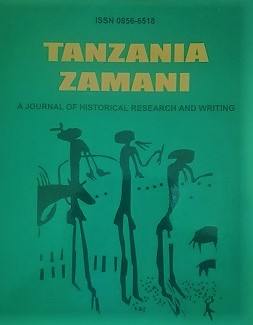Symbolism and Gender among the Late Pre-Colonial Luo People in Northern Tanzania: Lessons on How to Interpret African Mythical Traditions
Keywords:
symbolism, mythical tradition, gender, lake, marriage.Abstract
Unlike the historical studies undertaken in Africa during the 1950s and 1960s, there has been a declining interest among historians to employ mythical traditions in understanding African past. While this trend can be viewed as a response to theoretical, methodological, and thematic shifts that have taken place in African history over the last few decades, it is my submission that there is a need to reincorporate mythical traditions in historical analyses so as to broaden the horizon within which African past can be understood. This article seeks to analyse implicit gender constructions among the Luo people of northern Tanzania as unveiled through the story of a mythical woman called Nyamgondho. I argue that, in the final analysis, it was wife ' s productive and reproductive labour that sustained the economic well-being and social stability of the Luo society. This argument is substantiated by the sequence of events in the respective tradition depicting crucial contribution made by Nyamgondho in her husband ' s homestead in terms of wealth creation and sustenance. The material presented in this paper comes from library research conducted in 2012 when I was a graduate student at the University of Iowa (USA) and the main objective was to demonstrate how symbolic information can be discerned from mythical traditions.


